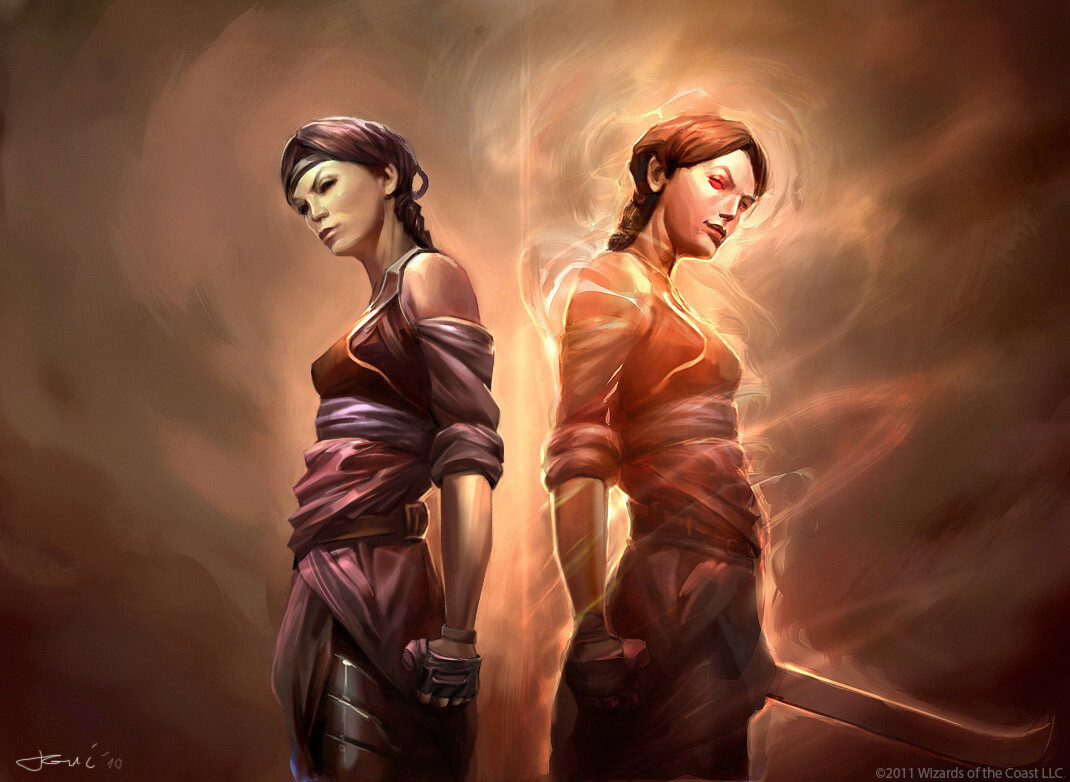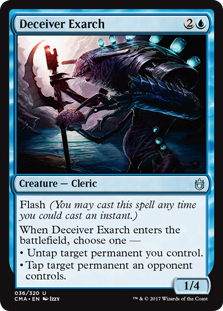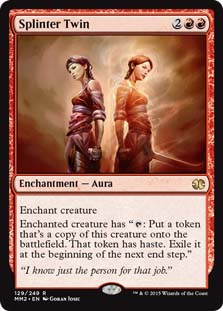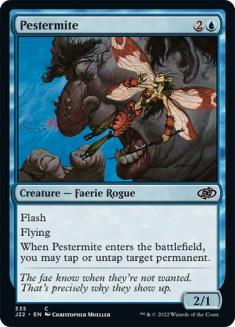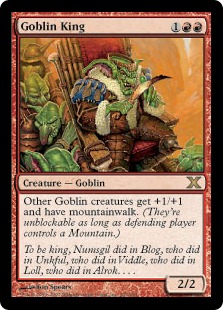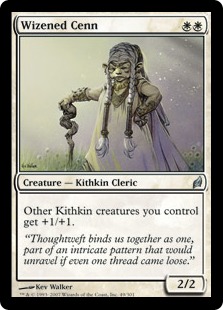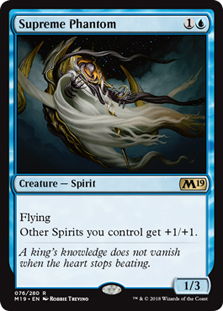Hello, and welcome to this edition of Sullivan’s Satchel. I’ve been doing my best to pay attention to the Kaldheim reaction from the more competitive corners of the community, and the most common positive reaction seems to be the perceived quality increase in the white cards. On the heels of Skyclave Apparition (in the conversation for best white creature of all time, it seems), people seem to be optimistic about white’s competitive chances, and the seeming intentionality of giving white some gas.
I’ve been playing Magic long enough to remember each color (except blue, maybe) being in the competitive doldrums, and I think it’s worth keeping in mind that this is rarely an issue of color pie (white doesn’t do enough, it is too powerful to draw cards and therefore blue is always the best, etc.) and more of an issue of rates. The game can be balanced around whatever, and there’s nothing intrinsic to any of the colors that makes one more or less likely to be the best, especially with Wizards of the Coast (WotC) softening some of the firmer color pie restrictions in recent years. Just useful to get reminded of this every so often.
With that, the satchel. As always, you can send in your questions to [email protected], or DM me on Twitter @BasicMountain. Each week, one of them will be selected as the question of the week, and the author of that question will receive $25 in SCG Credit. With that,
Thomas Wu asks:
How do you feel about unbanning Splinter Twin in Modern?
I think the banning of Splinter Twin was unambiguously positive when it happened a half-decade ago. It was the most dominant deck over an extended period of time and collapsed all versions of Blue Control into the same shell. It also was extremely stressful to play against, and in general I dislike the experience of one player never having to commit anything on their own turn, and the burden of playing around everything to be on the opposing player. I find this experience to be especially bad when it involves navigating a maze of tricks on the battlefield (the energy mechanic in Standard being the most extreme version of this in recent memory, especially with The Scarab God and Aetherworks Marvel being key pieces as well), but getting killed out of the opposing hand from almost no base is insidious as well.
I’m sympathetic to an unban for two primary reasons. One, the format has become much more powerful in the last five years. That matters on a number of fronts — the likelihood of Twin’s ubiquity for one, and the likelihood that all blue decks just become Twin decks. The opportunity cost to play the deck previously was cards like Pestermite and Deceiver Exarch, but part of Twin’s power came from the fact that those cards weren’t appreciably worse than the worst cards in everyone else’s deck. That is clearly no longer the case.
Second, while I typically don’t like managing bans and unbans based on particulars of the current metagame, there’s no question that WotC has dialed up the power on cards that make you commit mana on your own turn, namely Uro and Omnath. I like those cards in a vacuum, but there’s no doubt they’re hallmarks of the format, and if anything are collapsing a number of decks into “good stuff” shells with those cards as the glue. I think there’s some concern that Splinter Twin decks would leverage Uro (especially because Growth Spiral seems like a great fit as well), but some modest pushback against the tap-out threats could be good for the format.
I don’t see the rush to unban, though. Were I in charge of maintaining the Banned List I would want some stuff in my back pocket that I thought was reasonably safe to unban, so if I did want to ban one or more cards I could temper the negative reaction with something positive — you’re also getting something back. I think Modern has reached a point where Splinter Twin isn’t an obviously unwise bet, and I wouldn’t mind if it came off the Banned List at a point when the messaging made sense.
From James L:
How do you design a tribe like Giants? It seems challenging to make a creature type competitive when cheap designs don’t make much sense.
I like having the range even if “40 Giants” is never going to be a thing like 40 Elves or Goblins is. Part of that is widening the range on what it means to be “tribal” — I think nothing but Goblin Kings is pretty boring, and when the cheaper creature types get a lot of support it often looks like a bunch of Goblin Kings, except it is Vampire Kings or Kithkin Kings or whatever.
That isn’t to suggest the design is lazy; it’s just an easy, attractive way to provide dynamic rate, but it shouldn’t be the only way this stuff gets over. I also think that execution can lead to homogenous decks, which can be fine sometimes but not always. I’m on the record as really disliking Spirits because “nothing but flyers” is boring and doesn’t play that well, but the flavor sort of locks you in to how the creatures need to come together.
So, I don’t think you should start from a perspective of “How do we make X Giants in a deck a competitive thing?” Most decks fall short regardless of the support and trying to cram something through with major structural hurdles is more likely to do harm than good. Instead, if you make the target something like “decks play a Giant or two, and a card that calls out Giants, and cares about expensive CMCs or creatures with the greatest power,” something like that, I think you can make something fun and different even if it isn’t what comes to mind when people think of creature type decks.
From Reggie S:
Can the Clippers win it all? Follow-up: are you mentally prepared for a Lakers repeat?
I think the team is better than it was last year. Harrell-for-Ibaka is a major qualitative upgrade (I think Ibaka has been the league’s most underrated player during the past three years) and addresses strategic need (a big who can bang with Davis and Jokic, to the extent anyone can). I think it’s fine to raise an eyebrow at the Kennard and Morris contracts but the team was desperate for secondary playmaking and a big who can stretch the floor, and it isn’t my money anyway (and with every pick out the door until I’m retirement age, they were unlikely to get themselves into the trade market even if the books were cleaner). They pass the eye test too; maybe a few bad losses, but they look connected and the new coach smell is nice, too.
I think the Clippers are probably a hair short but they’re at worst within a Davis or LeBron (ha!) injury of being favored, even if we aren’t talking about the entire series. Denver looks pretty bad right now and I’m happy to chalk up last year’s collapse to the weird circumstances surrounding the bubble. I think this is the best Clippers team I’ve watched since 2015, which as we all remember ended extremely well for them.
I don’t harbor as much anti-Laker animus as I used to. Part of it is no longer being in LA (and therefore surrounded by Lakers fans); part of it is the Clippers being an explicitly mercenary outfit occupying exactly zero of the local or NBA zeitgeist. The Lob City Clippers were fun and cool and actually had a different appeal, especially in contrast to the professional, sharp, successful, and elderly mid 2010s Lakers. There was something electric about seeing those games in person. Now, the Clippers are just a well-run, orderly, professional outfit, a worse version of the Lakers in every respect, especially when it comes to their uniforms. It no longer matters as it once did.
Lastly, the Question of the Week, from Michael DeForge:
Question for the mailbag, that I hope hasn’t already been covered in a column I missed!
Do you have any thoughts about the pros/cons of eternal formats that are more “designed” or “curated,” rather than the ones that are just a pile of sets printed within a certain timeframe where anything too problematic gets banned? Historic is the obvious example of the former and Legacy the latter, but sets like Modern Horizons do seem to speak to a desire to construct a more designed experience in those older formats as well.
A lot of this sort of falls out on how sustainable you think the format is absent aggressive injections of new cards and bannings. My default position is that these formats are not going to “play well” in any traditional sense and so you’re best served to let people who are into nostalgia or a singular favorite card just select for that and not worry so much about appealing to newer players. I think the cost of cards is a multiplier here too — even if you made Vintage “better” by, let’s say, restricting Mishra’s Workshop, that isn’t going to cause an influx of new players to engage with the format and could be a significant turnoff to your previously invested players. Same is true by making a “Vintage Masters”-style product with the hope of mixing it up, or whatever.
Modern is right on the line for me — “affordable” by Magic’s eternal format standards, nostalgic-adjacent, already managed by a heavy hand towards bans. I think the Modern Horizons products can add to the format in a way that’s positive if it’s done judiciously and infrequently. Older formats fall on the wrong side of that exchange and newer formats should be manageable by printing the usual sets and not with specific subsidization.

